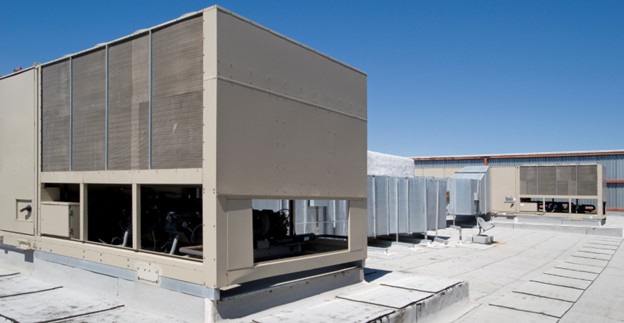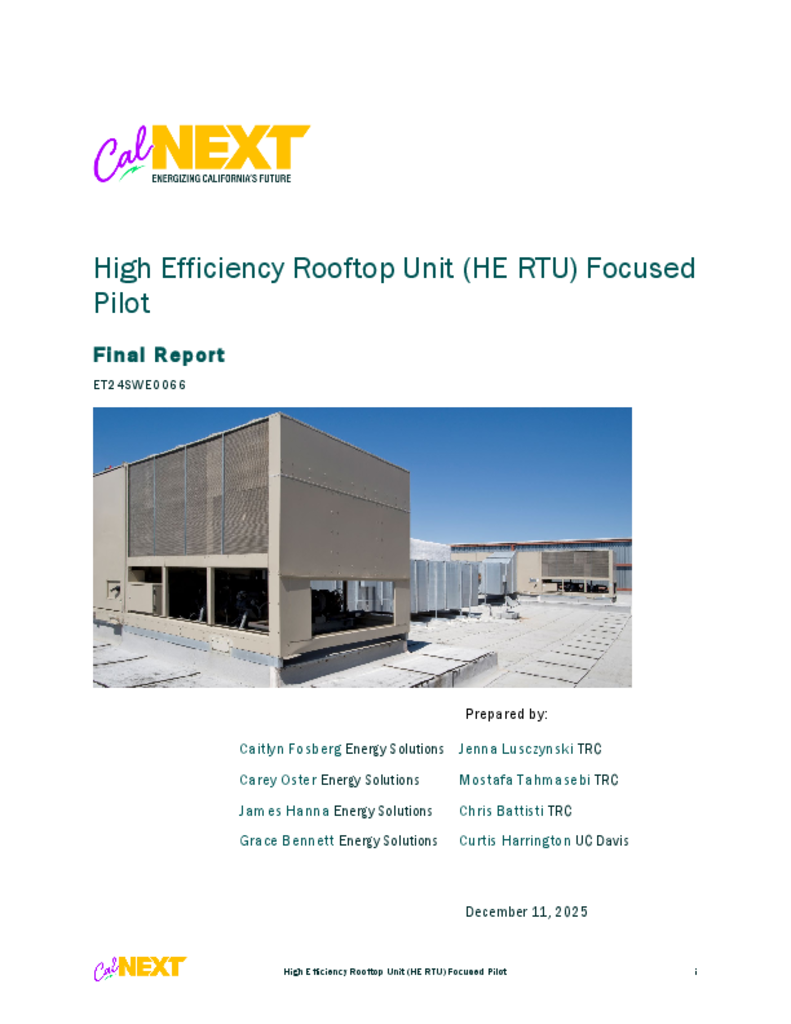ET24SWE0066 - High Efficiency Rooftop Unit (HE RTU) Focus Pilot

The 2024 High Efficiency Rooftop Unit (HE RTU) focus pilot builds off CalNEXT’s existing 2023 RTU focus pilot. The existing HP RTU focus pilot is a midstream pilot aligned with the current efficiency minimums of the current eTRM RTU HP measure packages. The goal of that pilot is to streamline the incentive process and increase measure participation above current levels in the existing SW HVAC program through specific measure engagement and marketing with key market actors and supply chain interviews aimed at identifying additional barriers to entry for HP RTU technology, which encompassed RTU heat pumps of any efficiency and capacity. The HE RTU focus pilot will first conduct a product characterization to define high efficiency with respect to Heat Pump (HP) RTUs and dedicated outdoor air systems (DOAS) and will then then implement a midstream pilot with the goal of increasing the number of HE RTUs and DOASs stocked and sold by distributors in California.
This focus pilot seeks to study the characteristics of HP RTUs that make them most efficient and create the greatest decarbonization impacts. We hypothesize that variable capacity capability will be identified by the market as the biggest efficiency driver but expect other characteristics like energy/heat recovery and controls to also be identified as drivers of system efficiency. Through the exiting RTU focus pilot, we know that at least two manufacturers are already producing and selling variable capacity HP RTUs in the California market with limited uptake.
The current FP focuses on any HP at least slightly above code minimum in alignment with existing eTRM entries. This FP looks more to home in on the characteristics of HP RTUs that make them the most efficient, on top of their decarbonization impacts.
It is well known that RTU style air conditioners with gas or electric resistance heating make up a large portion of HVAC systems for California’s commercial buildings. As these units age and are replaced, they present a substantial decarbonization opportunity to install heat pumps. By identifying the most efficient RTU and DOAS heat pump systems available in the market and the key characteristics that make them efficient, we will be able to make recommendations that impact future HVAC measure development setting those measures up for success with cost effectiveness and market readiness.
The High Efficiency Rooftop Unit (HE RTU) Focused Pilot builds off the recently concluded ET23SWE0073 Focused Pilot (Fosberg, et al. 2025). The goal of the ET23SWE0073 Focused Pilot was to streamline the incentive process and increase program participation above the lower documented levels in the existing statewide heating, ventilation, and air conditioning (HVAC) program. The eligibility of HP RTUs was limited to efficiency and capacities that qualified for the current fuel substitution measure. (https://www.caetrm.com/measure/SWHC046/03/) In addition to addressing known participation barriers, supply chain interviews aimed to identify additional barriers to entry for HP RTU technologies.
In contrast, this Focused Pilot seeks to examine the characteristics of HP RTUs that make them most efficient while maximizing decarbonization impacts for this technology. We hypothesize that the market will identify variable capacity capability as the primary efficiency driver but anticipate other characteristics—such as energy and/or heat recovery and controls—to be identified as additional drivers of system efficiency. Through the ET23SWE0073 Focused Pilot, the project team learned that at least two manufacturers are already producing and selling variable capacity HP RTUs in the California market with limited uptake.
This Focused Pilot aims to develop higher efficiency requirements for heat pump rooftop units and dedicated outdoor air systems (DOAS), with the goal of informing the development of a higher tier to be added to California’s prescriptive measure portfolio. This work also supports the addition of a measure for DOAS, which are not currently included in California’s RTU measure portfolio. Additionally, this research supports California’s Market Transformation Administrator’s (CalMTA’s) current market transformation initiatives (MTI), which prioritize commercial RTU installations in California to leverage increased energy savings (CalMTA 2024).

